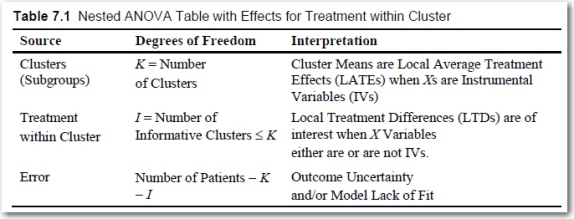Before you read the rest of this post, can you guess which book is the parent of this week's SAS author's tip? I'll give you a few hints (because I'm nice like that on late Friday afternoons). It's 436 pages, was written by 4 coauthors with a combined IQ that must be over 600, and is geared towards researchers at all levels and anyone who analyzes observational data in the medical industry. Also, the cover is quite lovely.
If you browse our SAS Publishing bookstore, you will discover that the described reference book is Analysis of Observational Health Care Data Using SAS by Douglas E. Faries, Andrew C. Leon, Josep Maria Haro, and Robert L. Obenchain. You can find out more about this book and the fabulous 4 coauthors by visiting the above links!
The following excerpt is from SAS Press authors Douglas E. Faries, Andrew C. Leon, Josep Maria Haro, and Robert L. Obenchain and their book "Analysis of Observational Health Care Data Using SAS". Copyright © 2010, SAS Institute Inc., Cary, North Carolina, USA. ALL RIGHTS RESERVED. (please note that results may vary depending on your version of SAS software)
7.1.3 Statistical Methods Most Useful in Local Control
The LC concepts discussed and illustrated in this chapter rely heavily on cluster analysis methodology (see, for example, Kaufman and Rousseeuw [1990]) applied to the observed baseline x-characteristics of patients. Clustering is a form of unsupervised learning (Barlow, 1989); no information from the ultimate outcome variables (y) or treatment assignment indicators (t) is used to guide (supervise) formation of patient clusters. While the bad news is that patient clustering is an extremely difficult (NP* hard) computational task, the good news is that several versatile and relatively fast (approximate) algorithms have been developed recently. For example, see Fraley and Raftery (2002) or Wegman and Luo (2002).
In the early phases of an LC analysis, the only statistical modeling and estimation tools needed are those of a simple nested ANOVA model with effects for clusters, for treatment within cluster, and for error in Table 7.1.
 In Sections 7.3.2 and 7.3.3, we will see that the LC focuses on new ways to analyze, visualize, and interpret nested treatment effects and their uncertainty.
In Sections 7.3.2 and 7.3.3, we will see that the LC focuses on new ways to analyze, visualize, and interpret nested treatment effects and their uncertainty.
While the LC approach to adjustment for selection bias and confounding clearly makes very good sense intuitively, it may be comforting to some readers to note that the basic strategy and tactics of LC are also fully compatible with the propensity scoring (PS) principles of Rosenbaum and Rubin (1983, 1984) as well as with the clustering-based instrumental variable (IV) approach of McClellan, McNeil, and Newhouse (1994). The appendix to this chapter discusses the common foundational aspects shared by both the PS and LC approaches.
* Non-deterministic polynomial-time.
Let us know if this tip was helpful to you! And share your suggestions for authors or books that you'd like to see featured tips from in the future.
